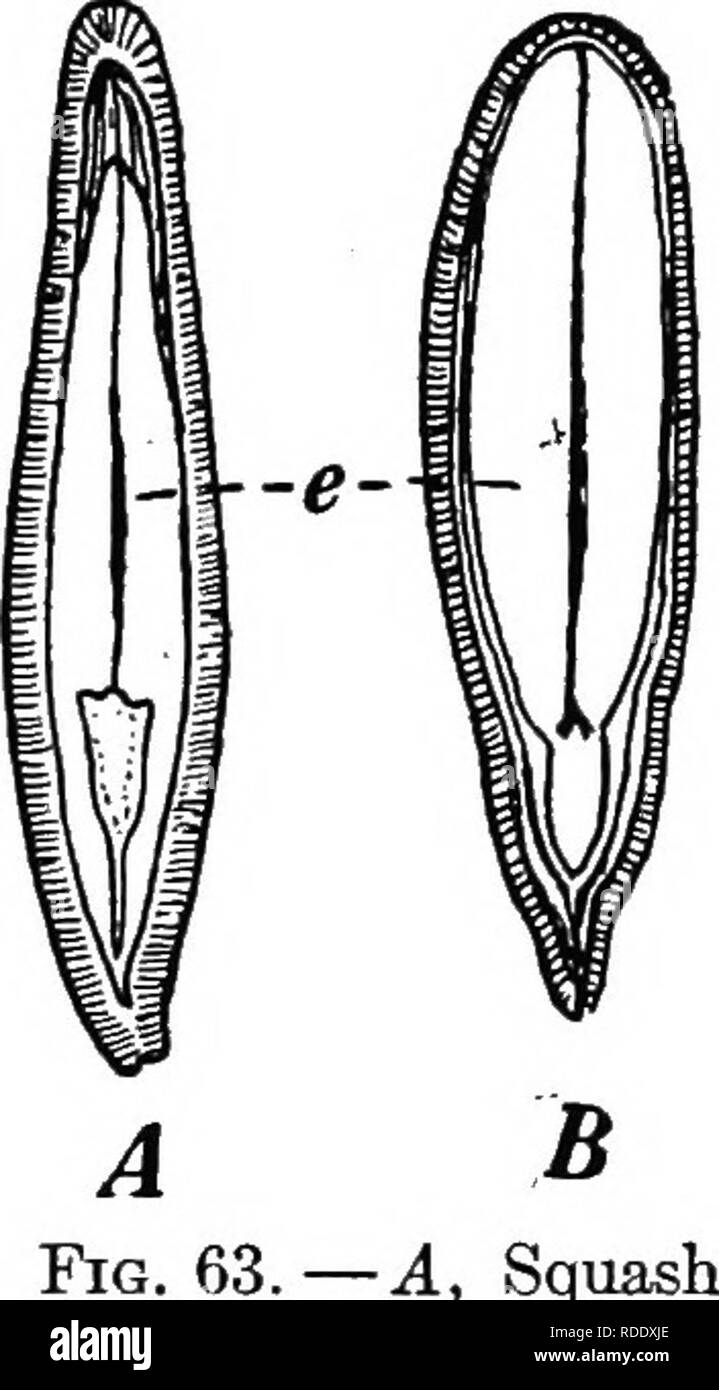. Botany for agricultural students . Botany. SEEDS OF THE BUCKWHEAT AND FLAX TYPE 59 endosperm. Another feature to be noted is that the embryo has two cotyledons. In external characters they vary so much that their type in most cases can be determined only by an examination of their structure. In size, those most commonly grown in our region vary from the smallest of the Clover Seeds up to the largest of the Beans. They are kidney-shaped, glob- ular, oval, or flattened. Among them vari- ous colors such as red, purple, brown, yellow, green, mottled, and black occur. In identifying the different

Image details
Contributor:
The Book Worm / Alamy Stock PhotoImage ID:
RDDXJEFile size:
7.1 MB (216.4 KB Compressed download)Releases:
Model - no | Property - noDo I need a release?Dimensions:
1176 x 2125 px | 19.9 x 36 cm | 7.8 x 14.2 inches | 150dpiMore information:
This image is a public domain image, which means either that copyright has expired in the image or the copyright holder has waived their copyright. Alamy charges you a fee for access to the high resolution copy of the image.
This image could have imperfections as it’s either historical or reportage.
. Botany for agricultural students . Botany. SEEDS OF THE BUCKWHEAT AND FLAX TYPE 59 endosperm. Another feature to be noted is that the embryo has two cotyledons. In external characters they vary so much that their type in most cases can be determined only by an examination of their structure. In size, those most commonly grown in our region vary from the smallest of the Clover Seeds up to the largest of the Beans. They are kidney-shaped, glob- ular, oval, or flattened. Among them vari- ous colors such as red, purple, brown, yellow, green, mottled, and black occur. In identifying the different seeds of this type, especially those of the Bean family, size, shape, and color are important aids. In importance, the seeds of this type rank next to those of the Grass family. In Beans, Peas, and Peanuts, which are used directly as food, the value depends upon the protein, fats, and starches stored in the seed sectioned longitudi- embryo. In the nally. B, Apple seed Cotton seed sectioned longitudinally.. Please note that these images are extracted from scanned page images that may have been digitally enhanced for readability - coloration and appearance of these illustrations may not perfectly resemble the original work.. Martin, John N. (John Nathan), b. 1875. New York : John Wiley & Sons, Inc.